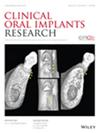Multifactorial Analysis of Trueness in Computer-Assisted Implant Surgery: A Retrospective Study
Abstract
Objectives
To investigate the clinically acceptable deviation threshold and the factors associated with trueness across three computer-assisted implant surgery (CAIS) approaches: static CAIS (s-CAIS), dynamic CAIS (d-CAIS), and robotic CAIS (r-CAIS).
Materials and Methods
A total of 314 implants in 194 patients were retrospectively included, with preoperative and postoperative CBCT scans collected. Outcome measures included platform, apex, and angular deviations, which were assessed by registering postoperative CBCT scans to preoperative implant plans using a jawbone matching technique. Generalized linear mixed models (GLMM) were employed to identify significant factors associated with implant trueness.
Results
In r-CAIS, mean global deviations were 0.65 ± 0.137 mm (platform), 0.73 ± 0.39 mm (apex), and 1.66° ± 0.99° (angular), significantly smaller than s-CAIS and d-CAIS (p < 0.01). Deviations in d-CAIS were 1.15 ± 0.55 mm, 1.23 ± 0.56 mm, and 2.87° ± 1.71°, whereas s-CAIS showed 0.96 ± 0.56 mm, 1.32 ± 0.67 mm, and 3.42° ± 1.85°. No significant differences were found between s-CAIS and d-CAIS (p > 0.01). All approaches met clinical acceptability thresholds of 1.5 mm for linear and 5° for angular deviation (p < 0.01). Analysis revealed that bone inclinations exceeding 45° significantly increased implant deviations at apex and angular (p < 0.01). Additionally, deviations were greater in the molar region, particularly at the second molar (p < 0.01).
Conclusion
All three CAIS approaches demonstrated clinically acceptable trueness, with the r-CAIS showing superior performance. Bone inclination and molar placement were identified as key factors contributing to increased deviations.
Trial Registration
Chinese Clinical Trial Registry: ChiCTR2400083777

 求助内容:
求助内容: 应助结果提醒方式:
应助结果提醒方式:


